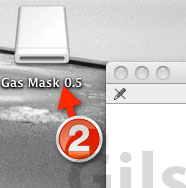| Original author(s) | Ken Thompson, Dennis Ritchie |
|---|---|
| Developer(s) | AT&T Bell Laboratories |
| Initial release | November 3, 1971; 48 years ago |
| Operating system | Unix and Unix-like |
| Type | Command |
Mount, in computing, is used to define the process of adding additional storage or other devices to a computing system. Whenever a mass storage device like a disk drive or flash drive is made available to the existing storage, it needs to be mounted on the system. For instance, inserting a CD is called mounting and installing the disk drive. Mac - How to Sync Photos Between iPhone and Mac with Finder in macOS Catalina & Big Sur - MacOS Big Sur 11.0.1 Beta 1 Released for Testing - How To Merge Two Folders with the Same Name on Mac Using Finder - MacOS Big Sur Beta 10 Released for Testing - macOS 10.14.6 Supplemental Update Fixes Performance Issues for Mojave Users. Mound definition, a natural elevation of earth; a hillock or knoll.
In computing, mount is a command in various operating systems. Before a user can access a file on a Unix-like machine, the file system that contains it needs to be mounted with the mount command. Frequently mount is used for SD card, USB storage, DVD and other removable storage devices. Microsoft mac drivers. The command is also available in the EFI shell.[1]
Overview[edit]
Wd my passport hdd mac. The mount command instructs the operating system that a file system is ready to use, and associates it with a particular point in the overall file system hierarchy (its mount point) and sets options relating to its access. Mounting makes file systems, files, directories, devices and special files available for use and available to the user. Its counterpart umount instructs the operating system that the file system should be disassociated from its mount point, making it no longer accessible and may be removed from the computer. It is important to umount a device before removing it since changes to files may have only partially been written and are completed as part of the umount.
The mount and umount commands require root user privilege to effect changes. Latest doom game. Alternately, specific privileges to perform the corresponding action may have been previously granted by the root user. A file system can be defined as user mountable in the /etc/fstab file by the root user.
Use[edit]
Display all mounted partitions:
This example will mount the second partition of a HDD (hard disk drive):
and will unmount (by referring to the physical disk partition):

Music converter for mac free download. or (by referring to the mount point)
To remount a partition with specific options:
Derivatives and wrappers[edit]
pmount is a wrapper around the standard mount program which permits normal users to mount removable devices without a matching /etc/fstab entry. https://truesup530.weebly.com/microsoft-office-for-mac-2016.html. This provides a robust basis for automounting frameworks like GNOME's Utopia project and keeps the usage of root to a minimum.
This package also contains a wrapper pmount-hal, which reads information such as device labels and mount options from HAL and passes it to pmount.
Time machine backup volume. The gnome-mount package contains programs for mounting, unmounting and ejecting storage devices. The goal for gnome-mount is for GNOME software such as gnome-volume-manager and GNOME-VFS to use this instead of invoking mount/umount/eject/pmount or direct HAL invoking methods. GNOME previously used pmount. Note, gnome-mount is not intended for direct use by users.

Music converter for mac free download. or (by referring to the mount point)
To remount a partition with specific options:
Derivatives and wrappers[edit]
pmount is a wrapper around the standard mount program which permits normal users to mount removable devices without a matching /etc/fstab entry. https://truesup530.weebly.com/microsoft-office-for-mac-2016.html. This provides a robust basis for automounting frameworks like GNOME's Utopia project and keeps the usage of root to a minimum.
This package also contains a wrapper pmount-hal, which reads information such as device labels and mount options from HAL and passes it to pmount.
Time machine backup volume. The gnome-mount package contains programs for mounting, unmounting and ejecting storage devices. The goal for gnome-mount is for GNOME software such as gnome-volume-manager and GNOME-VFS to use this instead of invoking mount/umount/eject/pmount or direct HAL invoking methods. GNOME previously used pmount. Note, gnome-mount is not intended for direct use by users.
All the gnome-mount programs utilize HAL methods and as such run unprivileged. The rationale for gnome-mount is to have a centralized place (in GConf) where settings such as mount options and mount locations are maintained.[2]
As with all unix-like commands, the options are specific to the version of mount and are precisely detailed in its man page.
In addition to the system call mount, the function mount_root() mounts the first, or root filesystem. In this context mount is called by the system call setup.
See also[edit]
References[edit]
- ^'EFI Shells and Scripting'. Intel. Retrieved 2013-09-25.
- ^gnome-mount-0.6Archived 2008-06-05 at the Wayback Machine
External links[edit]
What Does Mount Mean On Mac Air
mount(1)– Version 7 Unix Programmer's Manualmount(8)– Linux Administration and Privileged Commands Manualmount(8)– FreeBSD System Manager's Manualpmount(1)– Linux User Commands Manualgnome-mount(1)– Linux User Commands Manual

